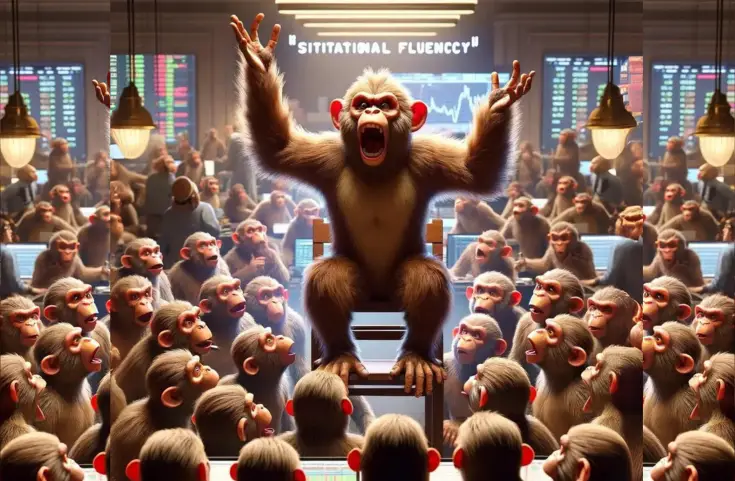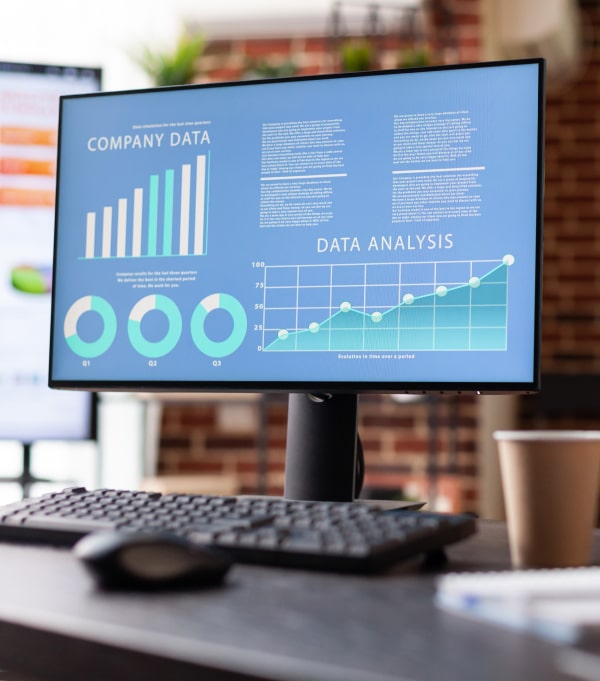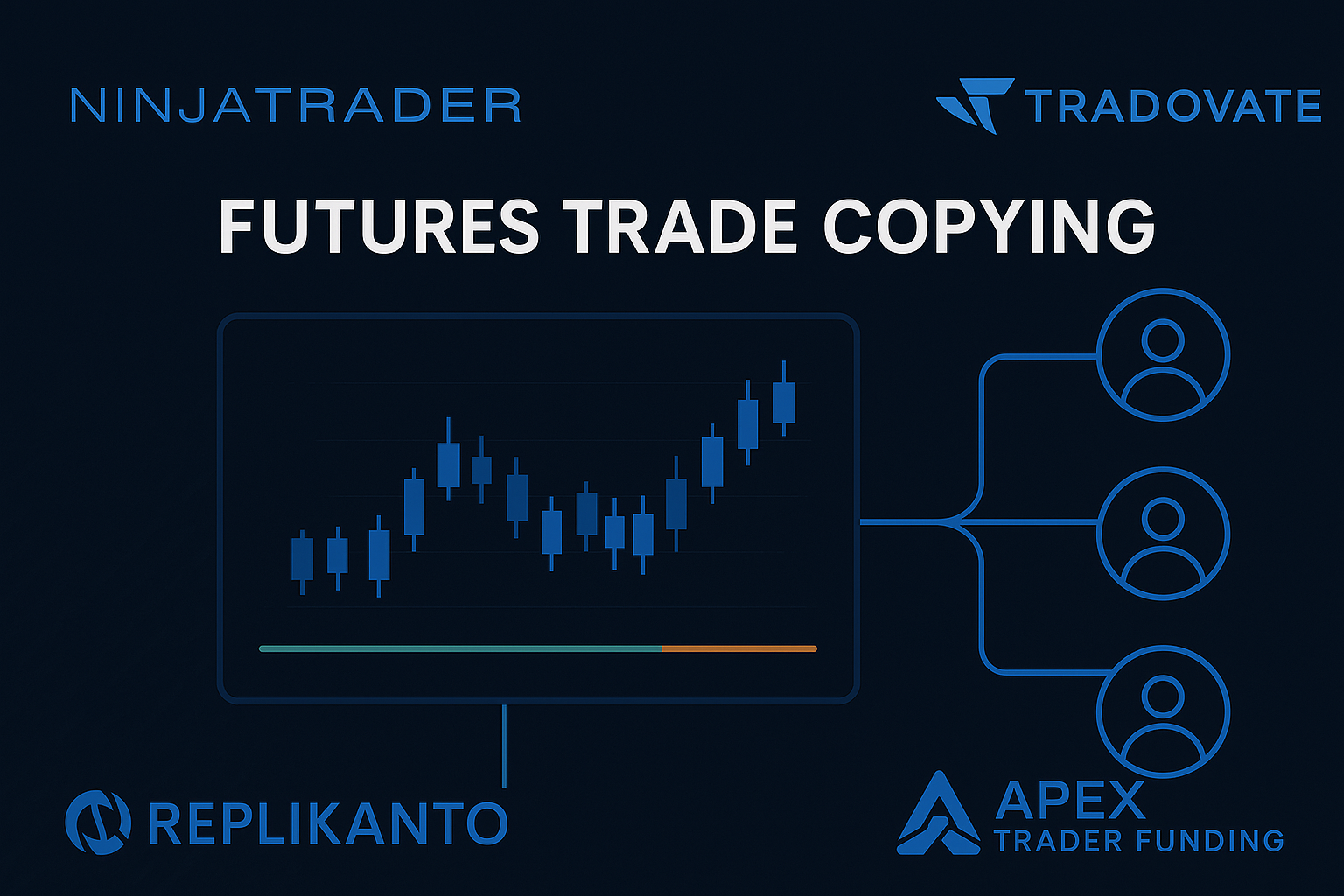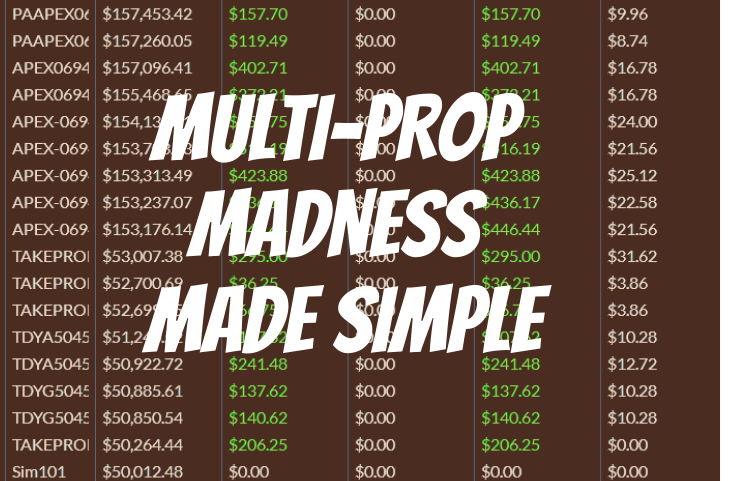
Why We Bring Humor to Trading (And Sing About It, Too!)
Learning about trading fundamentals like risk management, proper sizing, and chart reading can feel a bit like memorizing tax codes—essential but, let’s be honest, dry. So, at our trade rooms,

Learning about trading fundamentals like risk management, proper sizing, and chart reading can feel a bit like memorizing tax codes—essential but, let’s be honest, dry. So, at our trade rooms,

Hello, fellow drunk monkey traders! Let’s ChatGPT about a concept that you’ll hear from me often: Situational Fluency. Or as DALL·E 2 imagines it – Sititational Fluenccy. (Reminds me of this

Me:Please write me a clever poem about day trading the futures markets. ChatGPT:In the realm where futures dance and sway,A trader’s gaze on charts, where numbers play,With candlesticks that flicker,

Hey there, thrill-seekers and financial adventurers! 🌠 So, you’ve graduated from our last dive into the spellbinding world of futures options. Congrats! Now, you’re revved up, ready to roll, and

Futures Trading For Beginners: A Quick-Start Guide Welcome to the exhilarating world of futures trading! If you’ve ever wanted to dip your toes into this form of speculation, you’re in






Financial education, software, and strategies for self-directed investors and active traders.
Commodity Futures Trading Commission. Futures and Options trading has large potential rewards, but also large potential risk. You must be aware of the risks and be willing to accept them in order to invest in the futures and options markets. Don’t trade with money you can’t afford to lose. This is neither a solicitation nor an offer to Buy/Sell futures or options. No representation is being made that any account will or is likely to achieve profits or losses similar to those discussed on this web site. The past performance of any trading system or methodology is not necessarily indicative of future results.
CFTC RULE 4.41 – HYPOTHETICAL OR SIMULATED PERFORMANCE RESULTS HAVE CERTAIN LIMITATIONS. UNLIKE AN ACTUAL PERFORMANCE RECORD, SIMULATED RESULTS DO NOT REPRESENT ACTUAL TRADING. ALSO, SINCE THE TRADES HAVE NOT BEEN EXECUTED, THE RESULTS MAY HAVE UNDER-OR-OVER COMPENSATED FOR THE IMPACT, IF ANY, OF CERTAIN MARKET FACTORS, SUCH AS LACK OF LIQUIDITY. SIMULATED TRADING PROGRAMS IN GENERAL ARE ALSO SUBJECT TO THE FACT THAT THEY ARE DESIGNED WITH THE BENEFIT OF HINDSIGHT. NO REPRESENTATION IS BEING MADE THAT ANY ACCOUNT WILL OR IS LIKELY TO ACHIEVE PROFIT OR LOSSES SIMILAR TO THOSE SHOWN.
Testimonials Disclosure: Testimonials appearing on this website may not be representative of other clients or customers and is not a guarantee of future performance or succes